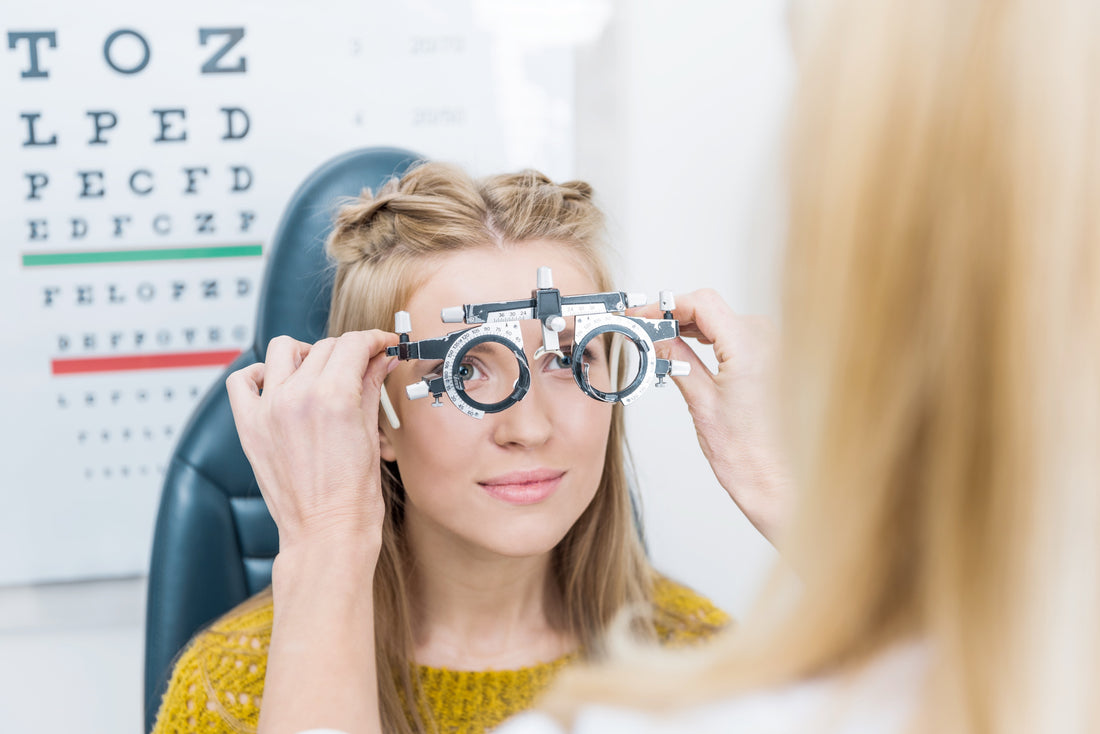The Struggle
We've all be there. We are seeing a patient for a 3-month or 6-month follow up and their complaints don't hint to a vision decrease. They can still read or drive with no trouble. But when we put them in front of the eye chart with the occluder, the vision is substantially worse than the previous visit. What could be causing this?
Let's take into account that this is a typical 55 year-old with no systemic conditions such as high blood pressure or diabetes. There's a few targets to point the gun at.
Dry Eyes
It's the go-to diagnosis when all else has failed. Dry eyes. But despite being a throw-away diagnosis for most doctors, this condition is very real and can cause some major visual problems for the sufferers of poor tear production. Without getting into the deep mechanics of the condition, suffice it to say that the tear film is the first actual "lens" that light passes through on its way to the retina. If the patient has a pair of glasses that were rx'ed on a "good tear" day, then that prescription will be a little flawed when the eyes dry out. The same applies in the opposite direction. A way to make sure that the Rx is always good is to put a drop of artificial tears before refracting AND before checking vision. Obviously, you should wait a few minutes for the watery side effects of a fresh tear to subside. But a good lube on the cornea can make all the difference.
Poor Progressive-Lens Measurements
Progressive lenses are a little bit of a wild beast, especially to new wearers. The finicky channel through the middle of the lens and the disorientation from losing some of your peripheral vision is a little much for some patients. Typically, when checking a patients eyes at distance, they think they need to "read" something. This subconsciously triggers them to tilt their head back and try to catch some add power from their bifocal for this "reading" task. Unfortunately, that's only going to hurt them. This is why it's important that the vision tester does not turn their back on the patient, especially if the visual acuities are not in line with what they were at the last appointment. Monitoring the patients head orientation while checking vision can give the examiner a clue to cue the patient to tilt their head down and catch the top-most part of the lenses.
If you are seeing a patient for the first time and their complaints don't involve blur at any distance but they test poorly on the chart, take their progressives and check the laser markings. There have been plenty of occasions where I've checked a progressive lens and the markings were very high, even into the distance zone of the lens, and just tilting the head back a small amount knocked out the distance capabilities of the patient.
When all else fails...
Suspect Medical Changes
If there's no obvious reason why the vision might have changed drastically, start suspecting something medical. I know that at the beginning of this article we stated that this was a regular, healthy 55yo patient, but that doesn't mean there can't be some sort of underlying systemic issue. They could be an undiagnosed diabetic and macular edema is just starting to present itself. They could be developing a central PSC and just a small change is affecting their vision in a big way. All in all, a PAM or a macular OCT could answer these questions immediately. During the work-up, a tech should be able to say "hey, something is different here" and give the doc some extra testing information before the exam. This will speed up the examination as the doc will not have to see the patient again after testing is completed or wait for testing that could have been done prior to the exam.
The take home point is that vision doesn't "just change" in certain ways. Yes there can be large myopic shifts in younger patients in a short time period, but those can be easily accounted for. In patients that don't fit that bracket, there is always something that is causing a vision shift that needs to be addressed. It could be as simple as not being accommodated to their new progressive lenses or it could be a flare up of systemic inflammation that's causing some blur. Either way, it's the job of the tech to notice these changes during the initial workup and provide the doc with solid testing data so good clinical decisions can be made.
